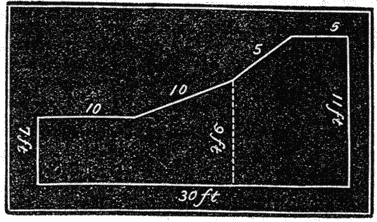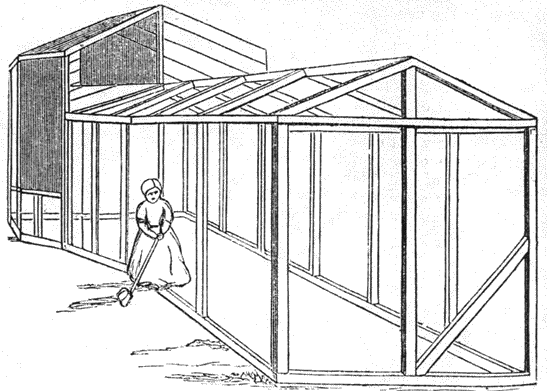
THE BRITISH JOURNAL OF PHOTOGRAPHY. March 2, 1863
THOSE who have enjoyed the pleasure of examining Mr. Rejlander's productions cannot have missed observing the very effective manner in which his subjects are usually lighted; and as this gentleman has recently constructed a new and inexpensive operating-room, at No. 7, St. George's Terrace, Maiden Road, Kentish Town, N.W., where he has established his head-quarters for professional work, we have, by his courtesy, an opportunity of giving those of our readers to whom the hint may be of service a description and rough illustration of the same, Fig. 1 is ground plan, and fig. 2 a plan of the framework of the erection,-the glass room consisting principally of wood and iron. In a note received some time since horn Mr. Rejlander he says:--a

FIG. 1

FIG. 2
"O.G. REJLANDER.""I enclose a rough sketch and plan as it now looks. From the windows the light can never be seen either by myself or my lens, of course, but only the light from the model or object.
"I hope soon to send. you a photograph properly lighted.
"There is a small window opposite the large glass, with but just enough light to mellow the shadows.
"I was going to make it very cheap, but I almost fear it will be more expensive, for the district surveyor objects to the wood. It never pours but it rains.
"I saw in your Journal something about the Prince Consort giving me the recipe of 'Clausel's paste.' He showed me some, and also rubbed it on a photograph, and showed me how to finish it, but he did not tell me what it was made of. He 'was not at liberty then to tell me.' He had it from Carl or Louis Haag, the German artist. But I found it out easy enough soon after. (He did not give it any name). I saw in THE BRITISH JOURNAL OF PHOTOGRAPHY (then the Liverpool and Manchester Journal) a paragraph on 'Clausel's paste,' which I judged to be the same, and communicated it to Bailey, who now makes it, and the appearance and effect are just the same as that shown to me at Buckingham Palace.--Fare thee well.
The glass-room has been completed, and gives Mr. Rejlander great satisfaction. The history, as above given, of the origin of Clausel's encaustic paste as made in this country, is amusing enough.